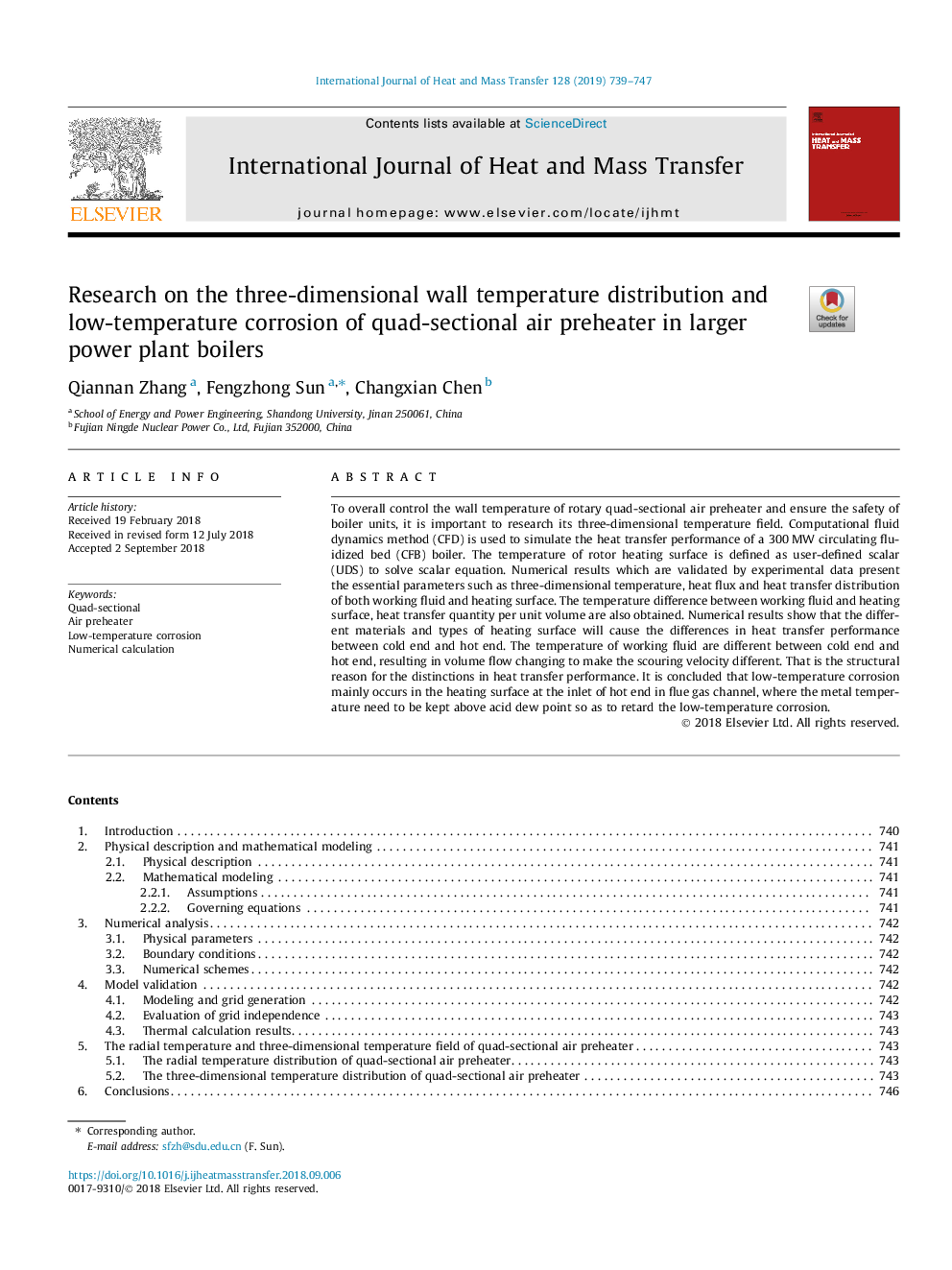| Article ID | Journal | Published Year | Pages | File Type |
|---|---|---|---|---|
| 10139849 | International Journal of Heat and Mass Transfer | 2019 | 9 Pages |
Abstract
To overall control the wall temperature of rotary quad-sectional air preheater and ensure the safety of boiler units, it is important to research its three-dimensional temperature field. Computational fluid dynamics method (CFD) is used to simulate the heat transfer performance of a 300â¯MW circulating fluidized bed (CFB) boiler. The temperature of rotor heating surface is defined as user-defined scalar (UDS) to solve scalar equation. Numerical results which are validated by experimental data present the essential parameters such as three-dimensional temperature, heat flux and heat transfer distribution of both working fluid and heating surface. The temperature difference between working fluid and heating surface, heat transfer quantity per unit volume are also obtained. Numerical results show that the different materials and types of heating surface will cause the differences in heat transfer performance between cold end and hot end. The temperature of working fluid are different between cold end and hot end, resulting in volume flow changing to make the scouring velocity different. That is the structural reason for the distinctions in heat transfer performance. It is concluded that low-temperature corrosion mainly occurs in the heating surface at the inlet of hot end in flue gas channel, where the metal temperature need to be kept above acid dew point so as to retard the low-temperature corrosion.
Keywords
Related Topics
Physical Sciences and Engineering
Chemical Engineering
Fluid Flow and Transfer Processes
Authors
Qiannan Zhang, Fengzhong Sun, Changxian Chen,
